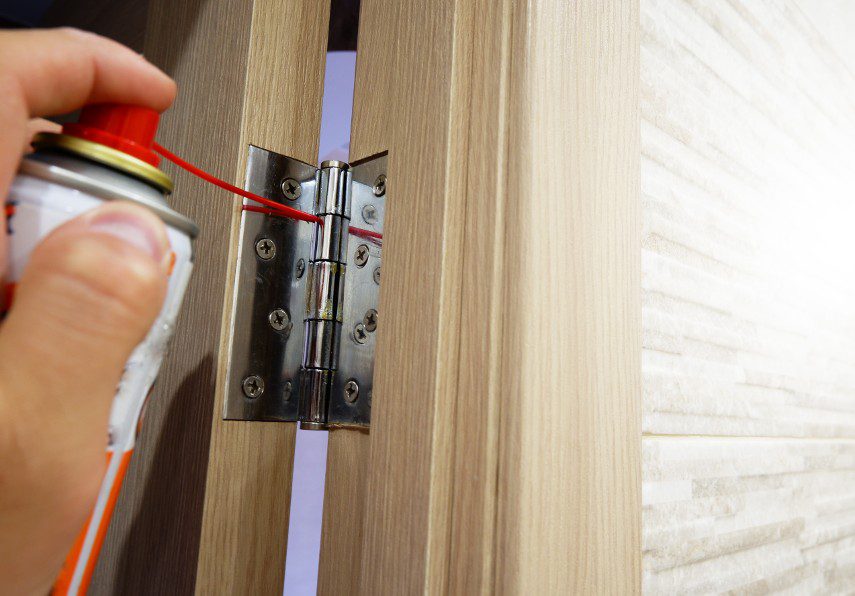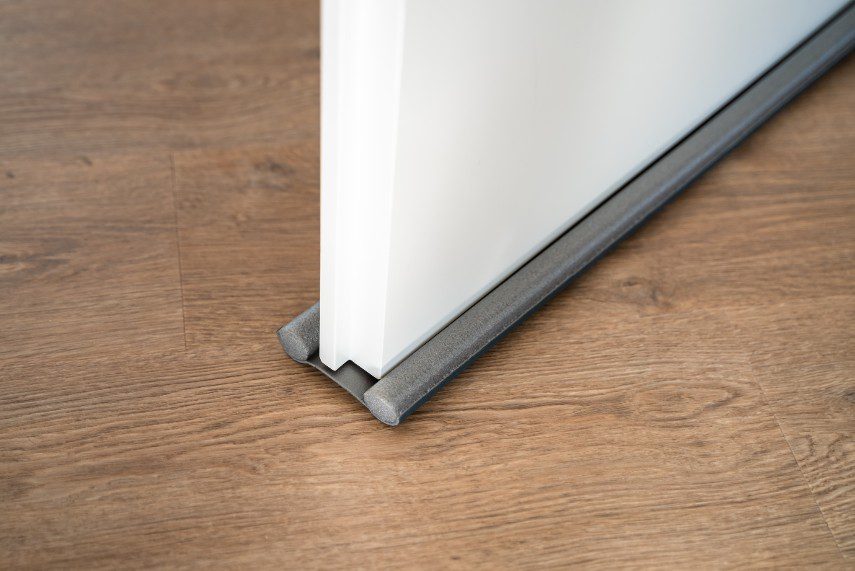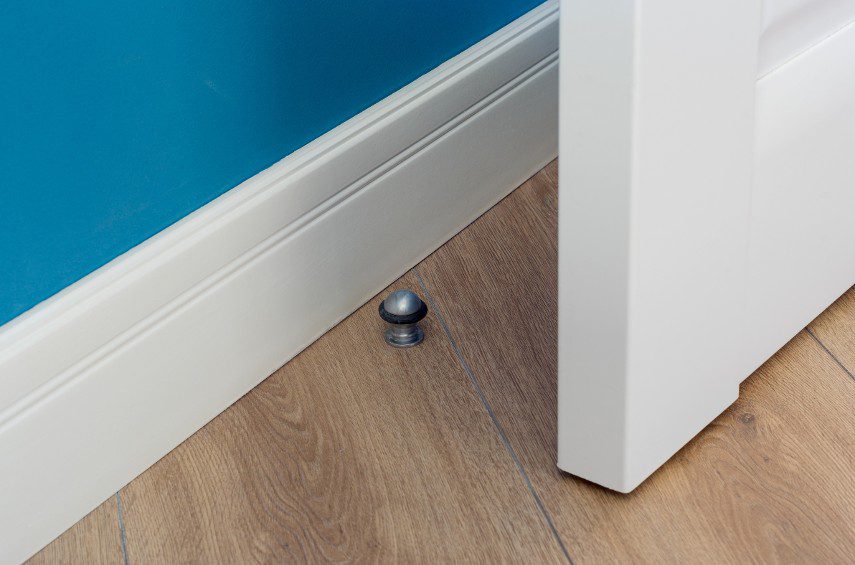Common internal door problems and how to fix them
We can’t all be DIY experts, so having a helping hand from those that are, can save you time, money and worry when it comes to working out what’s up with your internal doors. At JB Kind, we’ve been door specialists for almost 40 years, and we’re pleased to share our top troubleshooting tips with you.
Squeaky clean: Your door is squeaking or creaking
If your door is making not-so-surreptitious squeaking sounds then, chances are, you are being hampered by your hinges. Hopefully, your hearing – and your door drama – can be easily appeased by bringing out a can of the wonderful WD40 (or other oiling product). However, if your creaking continues, then we’re afraid you will need a replacement set of hinges.

Shake, rattle and roll: Your door rattles when it’s closed
One might think that if your door is closed, rattling would be impossible – but sadly not! The most likely issue is that the door wasn’t quite fitted properly, and the latch is not positioned correctly in the strike plate. The simplest solutions would either be to add some draught strips to fill in any gaps so it stops any movement, or it would be to reposition the strike plate – both options are far less trouble than trying to do anything with the latch itself!
Cold snap: Your door is letting through cold draughts
When it’s chilly, the last thing you need is a door – or doors – that are poorly insulated. Creating a heat-tight room, that’s super toasty, is a must-have during Autumn and Winter, because remember, every draught you let escape will affect your budget’s bottom line! So, what can you do to ensure your hard-earned heat stays where it should? Insulating all gaps with draught strips is a great start, but failing that, take a trip back in time and get yourself a good old fashioned draught excluder!

Sticky wicket: Your door is sticking in its frame and not closing properly
There are a few possibilities here… your door could be out of alignment, so it’s worth checking if everything that should match up, does; alternatively, perhaps your door has swelled because of an intake of moisture – or it could even be that you have a wonderfully warm home! What are the next steps so you can narrow down the issue, and find the right solution?
If you take a good look at your door and find that it’s a little skew-whiff, then straightening it up and ensuring it’s hung properly, should be just the ticket! But if you’re not confident in making the changes to improve your doors, then why not get the opinion, and even the help of, a professional door fitter? Hanging a door accurately is certainly harder than it looks and finding a qualified joiner to help, might just save you hours of DIY heartache!
However, if the problem is that your door has an ingress of moisture, then you’ll need to find out how the droplets are sneaking into your door, and give your door edges a thorough once over to make sure they have been sealed correctly. And just to give you an additional option, your door’s swelling could also be down to a hot house! Heat and warmth can also mean you door may expand, so it’s worth seeing if you can tighten the hinges and replace any missing screws to stop the door sticking. If that doesn’t sort out your sticky issue, then it’s time to take a plane to trim your door’s edge but – be warned! Be very careful not to take off too much!
Dragging it out: Your door is dragging on your carpet
A new carpet will often be thick and luxurious, and as a consequence, it’s not uncommon to have to trim the bottom edge of your door, once your new carpet has been fitted. But, as with any plane work, it’s permanent, so please be careful not to trim off too much – because you can’t take it back!
Open sesame: Your door is not latching and closing properly
This could be a problem with the location of your latch. It’s most likely that when the door is closed, the latch is not positioned centrally in the strike plate. Repositioning the strike plate so that the latch slots in properly is the easiest approach. It’s also worth noting another possible option – if the gap between the edge of the door and the frame is too big, the latch will not reach the strike plate. Ordinarily you may think that buying a new door the only route, however, to avoid this, you could pack the hinge out (you can always commission professional help, if you think you’ll need a hand with your hinge).
Cracking shot: Your door handle or knob hits the wall
Any home’s interiors are more impressive without door knob indents, so the simple solution is to fit a door stop to the skirting or the floor – a super easy aversion of a door handle disaster!

Case closed: Your door won’t stay open
Your door should be absolutely vertical, however, if you door has dropped slightly on its hinges, it could cause your door not to stay open. To start, you’ll need to check that that your door’s hinges are fitted firmly into the frame, and if they aren’t, you (or a professional fitter) will need to refit them. Alternatively, your door issue may also be due to the door jamb – the vertical side of your door’s frame that has the hinges – being a little wonky. If this is case, the frame will have been poorly fitted and would need replacing, so we’d suggest commissioning a professional fitter or joiner to make sure you ensure a top notch job, the second time around.

